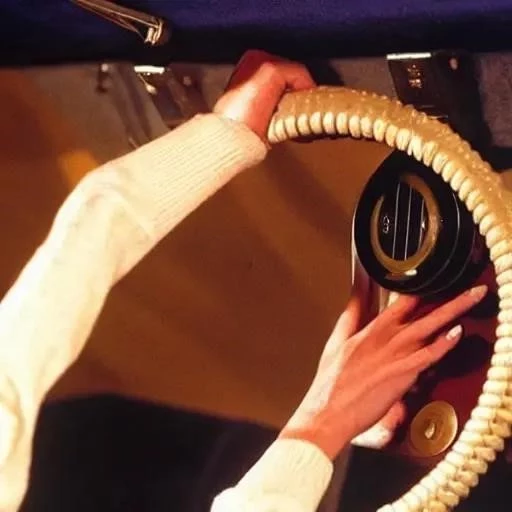
The open road at night holds a certain mystique, a tranquil invitation to journey under the stars. Yet, this serene experience can often be disrupted by an unexpected adversary: your car’s own interior lights. Those glowing dashboards, bright infotainment screens, and illuminated cabin controls, while essential for functionality, can transform from helpful guides into glaring distractions, significantly impairing night vision and contributing to driver fatigue. Imagine navigating a dimly lit highway, your eyes constantly battling the internal glow, creating an unnecessary strain that detracts from the pure pleasure and safety of driving. It’s a subtle but profound challenge many motorists face, often without realizing the simple, empowering solutions at their fingertips.
For too long, drivers have passively accepted the default luminosity of their vehicle’s interior, unaware of the profound impact a properly calibrated lighting environment can have on their nocturnal adventures. This isn’t merely about aesthetics; it’s fundamentally about enhancing safety, reducing eye strain, and cultivating a more immersive and enjoyable driving experience. By taking proactive control over your car’s internal glow, you’re not just dimming lights; you’re illuminating a path to greater comfort, heightened focus, and an elevated connection with the road ahead. The ability to fine-tune your cabin’s ambient light is a transformative feature, offering a bespoke environment tailored precisely to your individual needs and the prevailing conditions outside.
Key Benefits of Optimal Interior Car Lighting
| Benefit Category | Description | Impact on Driving |
|---|---|---|
| Enhanced Safety | Reduces glare and improves the driver’s ability to adapt to external low-light conditions. | Significantly decreases the risk of accidents by maintaining better night vision. |
| Reduced Eye Strain & Fatigue | Minimizes the contrast between bright interior lights and the dark exterior, lessening visual discomfort. | Allows for longer, more comfortable drives, preventing headaches and tired eyes. |
| Improved Focus & Concentration | Eliminates distracting bright spots within the cabin, keeping the driver’s attention on the road. | Enhances cognitive function and reaction times, crucial for safe driving. |
| Elevated Driving Experience | Creates a more sophisticated, calming, and personalized ambiance within the vehicle. | Transforms routine commutes into more pleasurable and less stressful journeys. |
| Enhanced Resale Value (Modern Cars) | Vehicles with well-maintained and customizable interior features often appeal more to buyers. | Contributes to the overall perceived quality and modernity of the vehicle. |
For more insights on automotive ergonomics, visit: SAE International
So, how does one achieve this harmonious balance of light? The process is remarkably straightforward, yet often overlooked. Most modern vehicles are equipped with an intuitive dimmer switch, typically located on the dashboard near the headlight controls. This small, often rotary or button-based mechanism, frequently marked with a sun or lightbulb icon, is your gateway to optimizing your cabin’s luminosity. A simple twist or press can dramatically alter the intensity of your instrument cluster, infotainment screen, and other illuminated controls, allowing you to seamlessly transition from a brightly lit daytime setting to a subtle, unobtrusive glow perfectly suited for night driving. It’s an incredibly effective tool, designed with your comfort and safety in mind.
Beyond the primary dimmer switch, the evolution of automotive technology has introduced even more sophisticated controls. Many contemporary cars feature comprehensive lighting adjustments accessible through their central infotainment systems. Delving into the ‘Settings’ or ‘Display’ menu might reveal a treasure trove of customization options, allowing you to independently adjust the brightness of various cabin elements, from ambient lighting strips to individual display screens. This granular control empowers drivers to craft a truly personalized interior environment, ensuring that no single light source becomes an unwelcome distraction. By integrating insights from advanced user interface design, manufacturers are increasingly making these powerful adjustments highly intuitive and easily navigable, reflecting a growing commitment to driver well-being.
Furthermore, specific lighting elements, such as dome lights and map lights, often come with their own dedicated controls. While usually designed for temporary, task-specific illumination, understanding their individual switches or touch-sensitive panels prevents accidental activation and ensures they don’t inadvertently flood the cabin with unwanted light during your night drives. Some vehicles even incorporate intelligent systems that automatically dim interior lights based on ambient external conditions or when the car is placed in gear, representing the cutting edge of automotive ergonomics. This proactive adaptation, driven by advanced sensors, truly elevates the driving experience, anticipating your needs before you even consciously recognize them.
As industry experts at leading automotive design firms frequently emphasize, the future of vehicle interiors is deeply intertwined with customizable, adaptive lighting. “The cockpit of tomorrow isn’t just about speed and power; it’s about creating a sanctuary, a personalized space that responds to the driver’s emotional and physical needs,” explains Dr. Lena Karlsson, a renowned automotive psychologist specializing in human-machine interface design. “Optimal interior lighting plays a crucial role in this, reducing cognitive load and fostering a sense of control and calm, which directly translates to safer and more enjoyable journeys.” This forward-looking perspective underscores the importance of even seemingly minor adjustments like dimming your dashboard lights.
Consider the analogy of a pilot in a cockpit: every dial, every screen is calibrated to provide crucial information without overwhelming the senses. Similarly, your car’s interior should function as a finely tuned instrument, with lighting serving to enhance, not detract from, your command of the vehicle and your awareness of the road. Embracing the power to dim your interior car lights is more than a simple adjustment; it’s a conscious decision to upgrade your driving experience. It’s about transforming potential distractions into subtle, informative glows, allowing your eyes to focus where they truly belong: on the vast, evolving landscape beyond your windshield.
